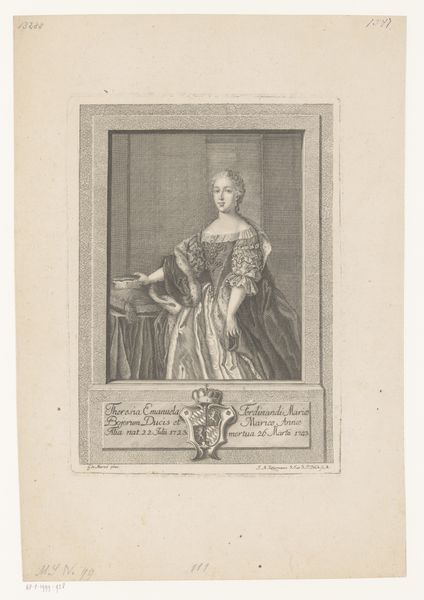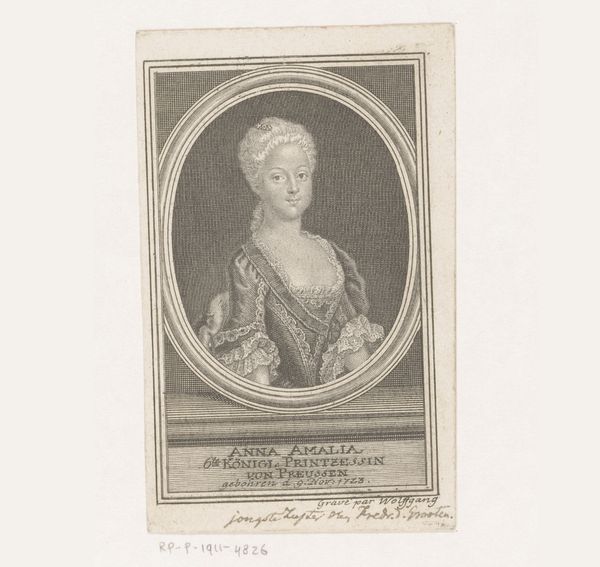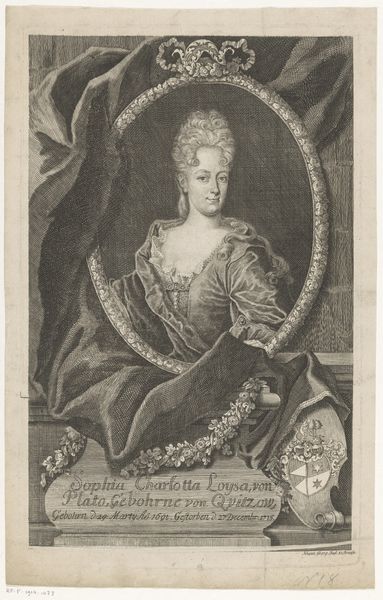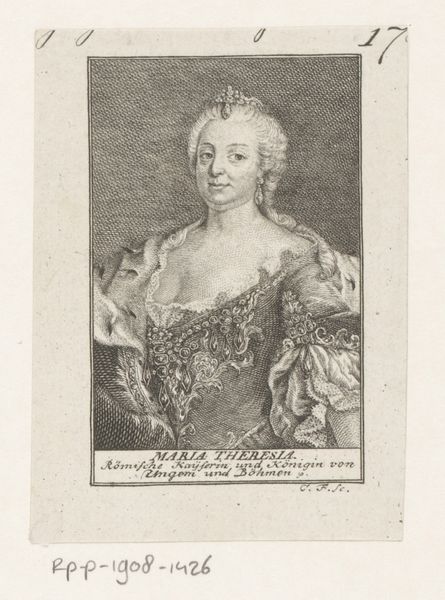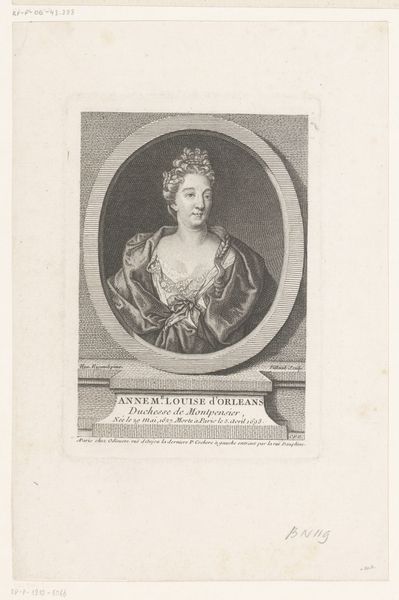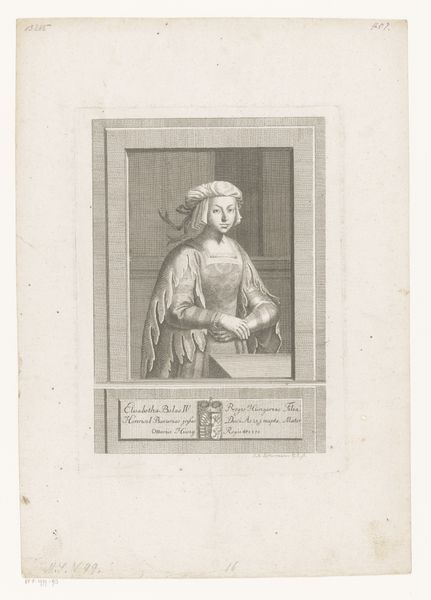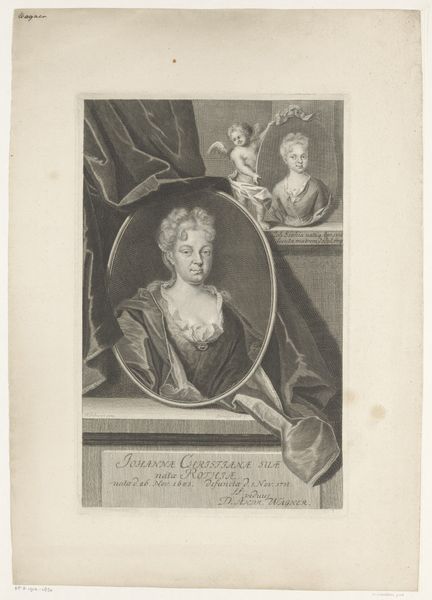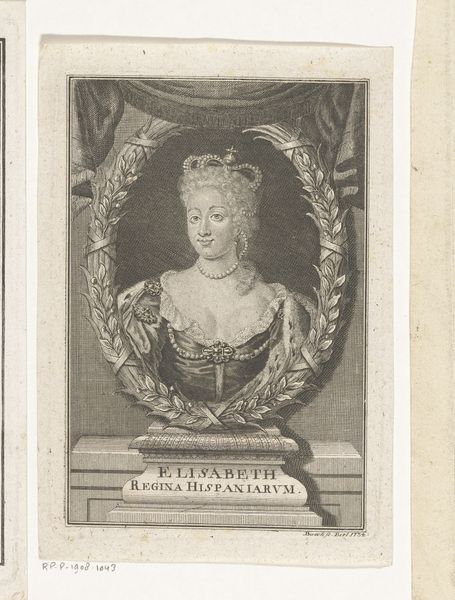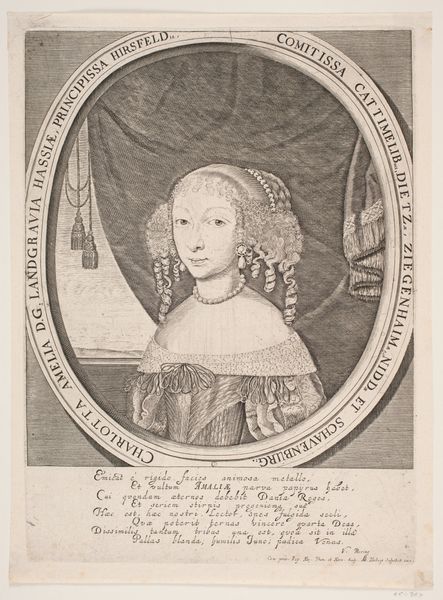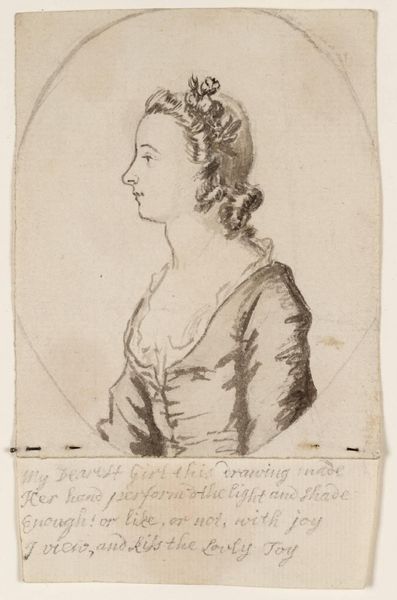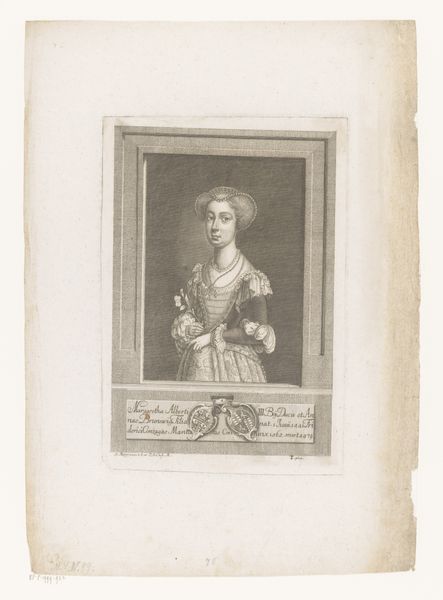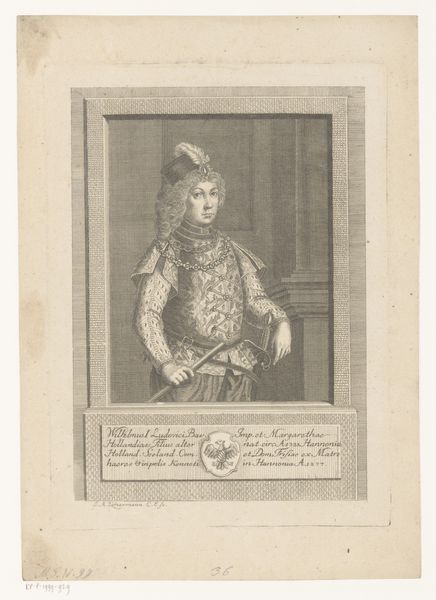
Dimensions: height 280 mm, width 192 mm
Copyright: Rijks Museum: Open Domain
Joseph Anton Zimmermann created this portrait of Catharina van Gorizia, using etching, a printmaking technique. To make an etching, you first coat a metal plate with a waxy, acid-resistant substance. The artist then scratches an image into that coating, exposing the metal underneath. When the plate is dipped in acid, the exposed lines are eaten away, creating grooves. These grooves hold ink, which is then transferred to paper under pressure. The process allows for fine detail and delicate lines, as you can see in the rendering of Catharina’s elaborate ruff and gown. Etching was prized for its ability to mimic the look of a pen-and-ink drawing, a skill which was very much in demand. But it’s important to remember the amount of labor that went into a print like this. Zimmermann wasn’t just an artist, he was also a skilled technician, and entrepreneur in a burgeoning print market. Far from being a straightforward reproduction, this etching is a fascinating object in its own right.
Comments
No comments
Be the first to comment and join the conversation on the ultimate creative platform.

